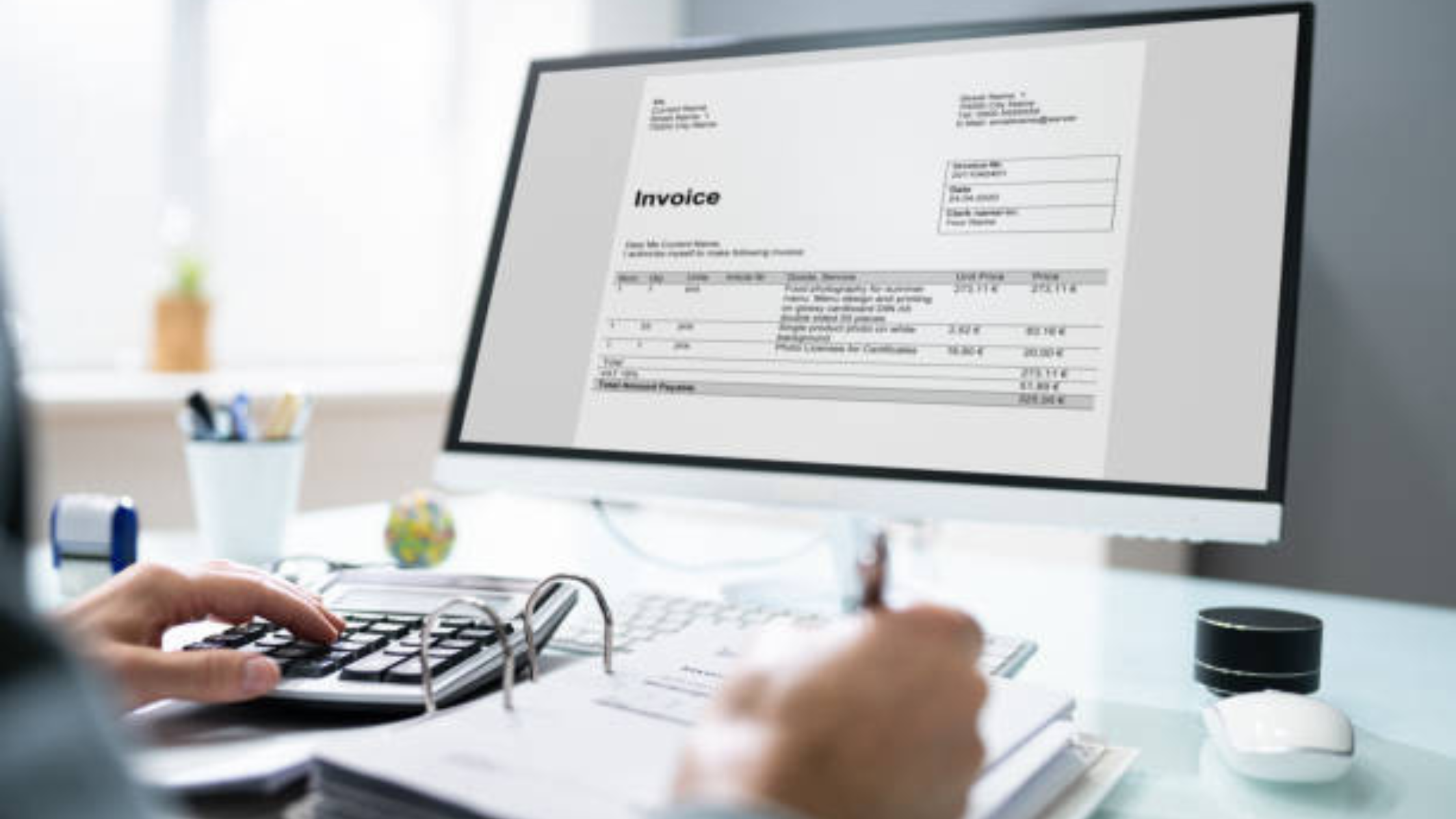The Importance of Salary Receipts and How to Create Them

In the realm of personal finance and professional accountability, salary receipts play a crucial role in documenting income and ensuring financial transparency. This introduction delves into the significance of salary receipts and provides insights on how to create them effectively. As a fundamental aspect of financial management, salary receipts serve as tangible proof of income earned through employment. They not only validate the payment received but also serve as essential records for tax purposes, loan applications, and budget planning. Understanding the importance of salary receipts is vital for individuals to maintain financial stability and compliance. Moreover, knowing how to create accurate and detailed salary receipts is equally essential. By following specific guidelines and utilizing modern tools, individuals can streamline the process of generating comprehensive salary receipts. This introduction sets the stage for exploring the intricacies of salary receipts, empowering individuals to manage their finances efficiently and responsibly.
Why Salary Receipts Matter
Legal Compliance
Ensuring that salary receipts are provided to employees is crucial for legal compliance. It serves as proof of payment and helps in case of any disputes or legal issues. Additionally, salary receipts are often required by labor laws in many jurisdictions to protect the rights of employees and ensure fair compensation practices.
Financial Records
Salary receipts are essential for maintaining accurate financial records. They provide a detailed account of the salary paid to employees, which is important for budgeting and financial planning. Moreover, these records are vital for tax purposes, as they help in calculating accurate tax deductions and ensuring compliance with tax regulations.
Employee Verification
Salary receipts also play a vital role in employee verification processes. They serve as evidence of employment and income, which can be required for various purposes such as loan applications or background checks. Furthermore, in today's digital age, electronic salary receipts are becoming increasingly popular due to their ease of verification and storage, offering convenience to both employers and employees.
Importance of Detailed Information
In addition to legal compliance, financial records, and employee verification, detailed salary receipts provide a wealth of information that can benefit both employers and employees. These receipts typically include details such as the employee's name, designation, pay period, gross salary, deductions, and net salary. This level of detail not only ensures transparency in salary payments but also helps employees understand how their salary is calculated and what deductions are being made.
Budgeting and Financial Planning
Detailed salary receipts are invaluable tools for employees when it comes to budgeting and financial planning. By clearly outlining the components of their salary, including taxes, insurance premiums, retirement contributions, and other deductions, employees can better manage their finances. Understanding how much of their salary goes towards various expenses allows employees to make informed decisions about saving, investing, and spending.
Tax Compliance and Reporting
Accurate salary receipts are essential for tax compliance and reporting. Employers must provide employees with correct salary information for tax purposes, including details on taxable income, deductions, and withholdings. By maintaining accurate salary records and issuing detailed receipts, employers help employees meet their tax obligations and ensure compliance with tax laws.
Building Trust and Transparency
Beyond legal requirements, salary receipts contribute to building trust and transparency in the employer-employee relationship. When employees receive clear and detailed salary receipts, they feel valued and respected by their employer. Transparent salary information fosters a positive work environment and enhances employee satisfaction and loyalty.
Conclusion
Salary receipts are not just pieces of paper documenting payment; they are essential documents that serve multiple purposes. From legal compliance and financial records to employee verification and transparency, salary receipts play a crucial role in ensuring fair compensation practices, supporting financial planning, and fostering trust in the workplace. Employers should prioritize issuing detailed and accurate salary receipts, while employees should actively review and understand the information provided in these receipts to make informed financial decisions.
Components of a Salary Receipt
When it comes to receiving your hard-earned money, a salary receipt plays a crucial role in documenting the transaction. Let's delve into the key components that make up a salary receipt.
- Employee Information
The salary receipt should include essential details about the employee, such as their full name, employee ID, and contact information. This information ensures that the receipt is accurately linked to the correct individual. Additionally, including the employee's job title, department, and work location can provide further context and clarity.
- Salary Details
One of the primary sections of a salary receipt is the breakdown of the salary. This includes the basic salary, allowances, bonuses, and any other forms of compensation. Having a clear overview of the salary structure helps employees understand their earnings better. Furthermore, detailing the pay period, whether it's monthly, bi-weekly, or weekly, gives employees a clear understanding of the time frame the salary covers.
- Deductions and Taxes
Deductions and taxes are crucial components that impact the net salary. Common deductions include contributions to retirement plans, health insurance premiums, and income tax. By outlining these deductions, employees can track how much of their salary is allocated to various obligations. Additionally, explaining the tax calculation method used, such as marginal tax rates or tax brackets, can help employees comprehend how taxes are calculated.
- Payment Method
The payment method section specifies how the salary is disbursed to the employee. Whether it's through direct deposit, a physical check, or another method, this information ensures transparency in the payment process. Providing details on the payment schedule, such as the specific day of the week or month when salaries are paid, can help employees plan their finances effectively.
- Date and Signatures
To validate the salary receipt, it is essential to include the date of payment and signatures from both the employer and employee. Signatures confirm that the payment has been received and acknowledged by the employee. Additionally, including a section for comments or notes where both parties can add any relevant information can enhance communication and documentation.
A comprehensive salary receipt should encompass these key components to provide clarity and transparency in the payment process. By including detailed information in each section, employees can have a better understanding of their compensation and ensure accurate record-keeping for both the employer and the employee.
Creating Effective Salary Receipts
Creating effective salary receipts is crucial for maintaining transparency and professionalism in financial transactions. A salary receipt not only serves as proof of payment but also plays a vital role in record-keeping and compliance. Let's delve deeper into the key aspects of crafting impactful salary receipts:.
Utilizing Templates for Efficiency
Employers can enhance efficiency by leveraging templates tailored for salary receipts. These templates ensure consistency in formatting and structure, making it easier to include essential details like employee information, payment amount, deductions, and payment method. By utilizing templates, businesses can save time and ensure uniformity across all receipts, presenting a polished and organized image.
Accuracy in Information
Accuracy is paramount in salary receipts. It is crucial to meticulously verify all details, including the employee's name, payment amount, tax deductions, and any additional benefits or reimbursements. Errors in receipts can lead to confusion and disputes, highlighting the significance of thorough verification before issuing the receipt. Ensuring precision instills trust and reliability in financial transactions.
Digital vs. Physical Receipts
The debate between digital and physical receipts influences how organizations manage payment documentation. While digital receipts offer benefits like easy storage, quick retrieval, and eco-friendliness, some employees may still prefer physical receipts for traditional record-keeping. Employers should consider the preferences of their workforce and adopt a hybrid approach that accommodates diverse needs, balancing convenience with tradition.
Storage and Accessibility
Proper storage and accessibility of salary receipts are essential for compliance and auditing purposes. Whether opting for digital archiving or physical filing systems, it is critical to securely store and readily access all receipts. Implementing robust data management practices and encryption protocols safeguards sensitive financial information, streamlining retrieval processes and ensuring compliance with regulatory requirements.
By adhering to these best practices - utilizing templates for efficiency, ensuring accuracy in information, navigating the digital vs. Physical receipt landscape, and prioritizing secure storage and accessibility - employers can create comprehensive and effective salary receipts that foster transparency and trust in financial transactions. Embracing these practices not only enhances operational efficiency but also strengthens the professional image of the organization.
Conclusion
Salary receipts play a crucial role in ensuring transparency and accountability in financial transactions between employers and employees. By following the steps outlined in this blog, individuals can create accurate and detailed salary receipts that serve as legal documents for record-keeping and dispute resolution. It is essential for both parties to understand the significance of salary receipts in maintaining trust and compliance with financial regulations.







